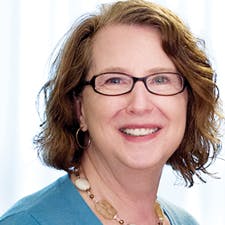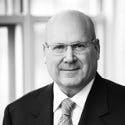Midyear report: The top dental industry trends of 2017 and predictions from the Apex360 Editorial Advisory Board
2017 ISN'T OVER YET, but it’s already brought some big changes to the dental industry. Here’s what the Apex360 Editorial Advisory Board and other industry experts have to say about it, as well as what they see happening in the remaining months this year. Don’t miss this feature! Our experts discuss the latest dental industry trends—the effect of DSOs, marketing changes, e-commerce, social media, and more.
Naomi Cooper—CEO, Doctor Distillery
Jean Patterson, CPA, CFE—Owner, J Patterson Consulting LLC
Andy Jensen—VP and CMO, Curve Dental
Jonathan Ford, DMD—Owner, Ford Dental Group
Lou Shuman, DMD, CAGS—Founder and CEO, Cellerant Consulting Group
Rachel Mele—Executive of Dental Divsion, Vennli
Brandon Campbell, DDS—Owner, Peak Family Dentistry & Orthodontics
What was one significant change you've seen in the dental industry so far this year?
Naomi Cooper: This year I’ve noticed an ever-increasing emphasis among dental industry marketers on inbound lead generation over branding-oriented efforts. Gone are the days of spending marketing dollars on efforts that are neither trackable, targeted, or timely; today’s dental marketing executives are looking for ROI-oriented strategies that pay off sooner than later. My clients certainly understand the inherent value of branding, but in the current environment, they are primarily focused on delivering measurable results.
Jean Patterson: As a nonclinician CPA and certified fraud examiner (CFE), I approached this question from a different perspective. There is a needed change that does not appear to be taking place. The Association of Certified Fraud Examiners publishes a biannual Report to the Nations, a statistical compilation of the results of the prior two year’s cases submitted by CFEs all over the world. The 2016 report shows that the typical organization loses 5% of revenue as a result of fraud. For a million-dollar practice that is $50,000—possibly a dentist’s pension payment. This 5 % has been consistent for all reports since 2006 with the exception of 2008, when the amount was 7%. This number should be decreasing, but it is not.
Andy Jensen: The greatest shift we've seen in 2017 is the growth in group practices, specifically organizations with 10 to 20 locations. An organization of this size will greatly benefit from management software that provides reporting and analytics across all locations. Central services, such as billing and scheduling, are also attractive to group practices. Curve Dental began to develop these features in 2016 and expects to have them ready for market in mid 2017. The response to our messaging to the group practice market has been positive thus far. Curve Dental expects the group practice market boom to continue, but also expects interest in cloud-based management software to significantly increase the later part of 2017.
Jonathan Ford: The change that I have seen is the continued digitization of all facets of the dental practice. The back office has seen tremendous improvements in 3-D printing, CAD/CAM technology, and cone beam. The front office has seen the streamlining of patient communication and insurance billing. The digitization of supply ordering and its effect on pricing has had a direct impact on my practice. I think the old model of having a supply rep stopping by my office every other week is a thing of the past. E-commerce has impacted everything we consume; it is only a matter of time before it enters the dental industry in a big way.
Lou Shuman: The increase in 3-D printing in the dental office. Digital “subtractive” manufacturing was a major development 15 years ago with the advent of milled crowns; however, in 2017 we’ve seen digital “additive” manufacturing come into dental practices as many common lab procedures can be 3-D printed. This trend will be a positive for both dentists and their patients in terms of application accuracy and efficiency of fabrication.
Rachel Mele: I sit at a slightly different seat than most people within the dental profession. I provide voice of the dentist research to dental manufacturers. So, I get to see a variety of changes occurring in how dentists make decisions about the products they use within their practices. If you asked me this question a year ago, I would have told you what dentists are thinking about most is, "how to get more new patients." While you'll still hear that out of the mouths of most dentists, a Vennli study compiling the results from 10,941 dental professionals reports patient outcomes as one of the most important factors dentists are thinking about.
Brandon Campbell: More patients are not insured. Medical insurance is mandatory, but dental insurance is still not. This increases more financial concerns for patients, allowing us to create treatment solutions and not treatment costs.
What opportunities have you seen unfold in the dental marketplace so far this year, and how have you taken advantage of them?
Naomi Cooper: Facebook marketing is a huge area of focus for many dental companies. However, Facebook’s current algorithm ensures that only a small proportion of those who have liked your company’s business page will end up seeing a given post from your brand. So, whether your company has 60 or 60,000 followers, your business page's unboosted Facebook posts are virtually invisible online. What does this mean? That spending time, money, and energy on building your company’s social media fan base has an ever-decreasing ROI. However, Doctor Distillery has an authenticated audience of 180,000 U.S. dentists on Facebook. We’re now working with dozens of dental companies, regardless of how many followers they may have on social media, and helping them reach our 180,000 licensed US Dentists via Facebook every day.
Jean Patterson: The opportunities I have seen unfold are opportunities that I have to make—to provide dentists with information regarding fraud (especially employee fraud) and arm them with tools to protect themselves.
Jonathan Ford: Dental service organizations have a competitive advantage by buying supplies in bulk. CDA’s new subsidiary, TDSC, has grouped the purchasing power of its member dentists to receive those same cost savings. This has reduced costs by 30–45% on most items general dentists order regularly. Ordering through the TDSC Marketplace has definitely helped my bottom line.
Rachel Mele: Consolidation is a consistent theme. I get numerous phone calls from private equity firms wanting advice as they consider investing in buying up dental practices. Consolidation is continuing with health-care manufacturers as well (e.g., the Dentsply Sirona merger, the Cantel and Crosstex merger). The advantage for me is economies of scale and process. It's not practical for my business to support solo practices or even smaller manufacturers, but if you bring together multiple practice and merge manufactures under one roof, I can help them improve their organization in mass with a significantly bigger impact.
Brandon Campbell: Mobile-friendly websites and social media content. Neither one of these are new, but patients demand that their dentist to keep up with their busy lives and that they can handle their medical appointments with a touch of their phone.
What is one prediction you have for the dental industry in the second half of 2017?
Naomi Cooper: At Doctor Distillery, we see digital budgets increasingwhile traditional marketing budgets continue to be trimmed; the biggest trend I foresee in the second half of 2017 is that the dental industry continues to move online. Dentists are spending an increasing amount of their free time on the internet, whether on their laptops, tablets, or mobile devices. So, by necessity, dental marketers will to continue to shift to highly targeted online mediums such as Doctor Distillery in order to better reach their target audience.
Jean Patterson: My prediction is that if dentists are open to learning about the ways they can become victims of fraud (I would love to talk to your study club), and the steps they can take to minimize it, their pension contributions may be spared.
Jonathan Ford: The big supply companies will have to alter their model of business at some point. Amazon is out there and already has a small dental supply business. It is just a matter of time before they make a splash and really enter the dental supply arena via partnership or purchasing of a company.
Discretionary dental spending is making up larger and larger portions of a dentists’ practice. Since most of these procedures are elective, insurance isn’t usually a factor and the profit margins are usually higher. These services include teeth whitening, veneers, aligners, and implants. For dental practice to be successful, dentist and staff alike will have to attain proficiency in these “requested” or “wanted” procedures, and create value for their patients to increase case acceptance. Those services and the companies that support them will continue to grow at an extremely fast rate.
Lastly, millennial dentists are finally entering the age where they can not only purchase dental practices but they can invest in their offices as well. These dentists are used to digital technologies since they grew up with them. These digital dental-specific areas are ready to grow exponentially.
Lou Shuman: Dentistry has always been a profession that requires a high degree of skill to create custom solutions with a high degree of accuracy—basically, we are the type of industry that has 3-D printing executives salivating. I predict that the advanced dental scanning/imaging technology we’ve enjoyed over the last several years will finally become mandatory in the dental office to enable in-office manufacturing through 3-D printing and milling. 3-D printing is beginning to finally find its use-cases in the dental office and the prices are slowly beginning to make sense. The major hold up for end-use 3-D printed dental products has been FDA clearance of the materials intra-orally. As these materials clear in the later part of the year, we may see a paradigm shift in many common dental procedures.
Rachel Mele: I've been keeping a close eye on e-commerce and dentist’s expectations around shipping time. I anticipate that dental manufacturers will make considerable changes to the ease with which customers can place orders and the speed with which they deliver products into the market. In a study conducted by Vennli of over 100 dentists, 95% expect to receive their products within a week, and 56% expect delivery in two days or less. Amazon has brought on a new culture of expectations and dental manufacturers have not yet to come close to meeting those expectations. I also anticipate manufacturers will work even harder in 2017 to improve the value adds they offer to dental professionals. In such a commoditized market, with prices continuing to drop, unless manufacturers can innovate in ways important to customers, they'll need to make their companies even sticker than ever.
Brandon Campbell: More offices are trying to keep up with the digital patient. This includes everything becoming digital and easy to access, all the way from digital paperwork, to signing into your practice, to booking an appointment at ease with one button on their smart phones, to digital dentistry including digital dentures, surgical guides, CAD/CAM, and so on.
Editor's note: This article first appeared in the Apex360 e-newsletter. Apex360 is a DentistryIQ partner publication for dental practitioners and members of the dental industry. Its goal is to provide timely dental information and present it in meaningful context, empowering those in the dental space to make better business decisions. Subscribe to the Apex360 e-newsletter here.
About the Apex360 Editorial Advisory Board and special guests
Jonathan Ford, DMD, is a general dentist at Ford Dental Group in Huntington Beach, California. He graduated from the University of Pennsylvania School of Dental Medicine in 2007. He served on the board of directors for The Dentist Service Company in 2015. He currently serves on a council for the California Dental Association and is a board member of the Orange County Dental Society. You can reach him by e-mail at [email protected]. Visit his website at FordDentalGroup.com.















